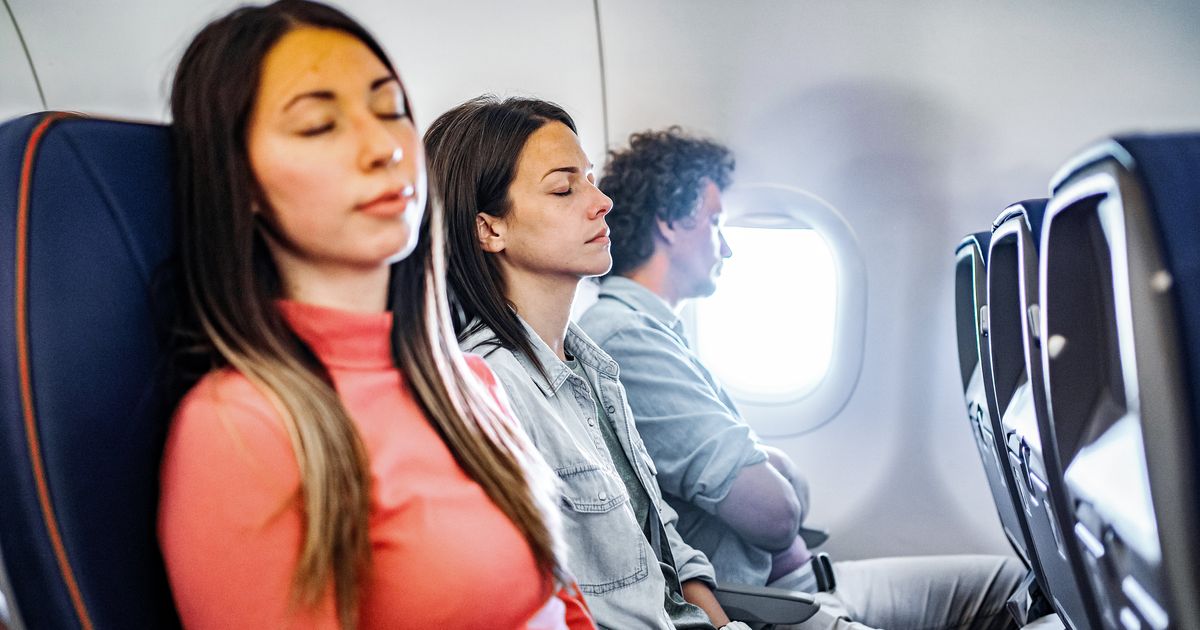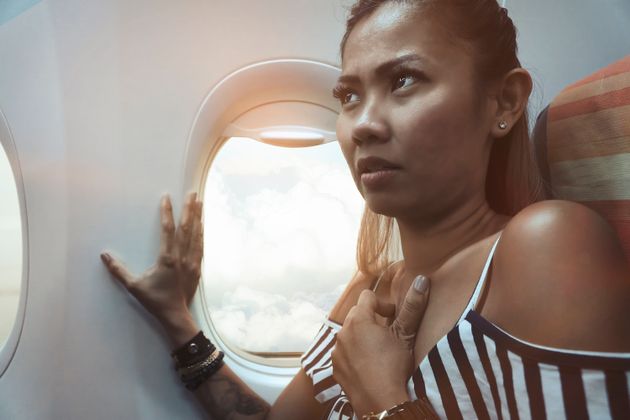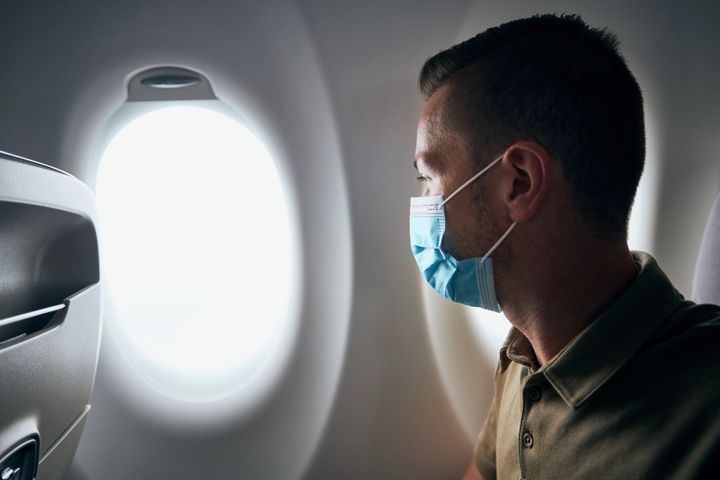Preparedness is the key to surviving the throes of motherhood. It’s also the key to ensuring that the complexities of cross-country travel go off without a hitch.
But all the books on motherhood and travel checklists in every type A traveling mama’s arsenal could not prepare me for the realities of how the Transportation Security Administration, Southwest Airlines, a five-star Las Vegas hotel, and society in general judge mothers and their needs.
Advertisement
With equal parts excitement (finally, a bit of a break!), trepidation (is there enough pumped milk to last the baby four days without me? Can Dad survive the demands of the baby and the 4-going-on-14-year-old alone? Will the house still be standing when I return?) and guilt (oh, the guilt!), I arrived at Albany International Airport prepared to take my first work trip to Las Vegas since welcoming my infant son in 2017.
Traveling solo is stressful enough, but traveling as a parent can be downright traumatic. There are never enough hours in the day to address everyone’s needs, let alone your own, so systems and efficiency are a requirement of the prepared traveling mama. I rolled my colorful carry-on filled to the brim with four days of business-casual attire, TSA-approved clear containers with miniature versions of my daily skincare ritual (anything to minimize the bags under my eyes that felt big enough to accommodate my luggage), and my nondescript breast pump slung over my shoulder through the TSA line.
“Ma’am, you’re going to need to step to the side. You’ve been selected for additional screening,” a security agent told me.
My first thought was, “Did he just ‘ma’am’ me?” followed by a feeling of ease knowing motherhood taught me to expect delays.
Advertisement
I stood to the side in front of hundreds of passengers in the TSA security line as a female agent came over to pat me down in search of contraband. I never felt more dehumanized than when the agent continued to press at my swollen breast (ready to leak at any moment if I wasn’t reunited with my breast pump soon), asking, “What is this? What do you have in here?”
Having to explain that the hard, plastic piece she was feeling was a component of my nursing bra that allowed me quick access to pump or feed my child was humiliating, especially when she followed up with, “Where is the baby?”
The wrinkled nose and tight upper lip on the agent’s face when I told her that I was traveling alone on a work trip but had my breast pump with me was sadly the first humiliating scorn I felt that day. Where is the book that prepares you for how to handle the judgment and questioning of every decision you make as a mother when you need it?

Courtesy of Jennifer Rowe
I slinked away from the security line, cleared to access my gate, but with an incessant urge to justify the fact that I was traveling solo, leaving my baby behind in the capable hands of his other parent. My job required this travel, and my baby required my employment to meet his needs.
Advertisement
And yet, I didn’t say any of this to the agent. I continued to my gate with plenty of time to pump milk for my son in the airport’s nursing mother’s lounge, as well as relax a bit before the boarding process began. However, the lounge didn’t exist. The Friendly Airports for Mothers Improvement Act that I researched prior to the trip promised that the lounge would be available, but a posted sign stated, “Future Site of the Nursing Mother’s Lounge,” and that a bathroom was available to privately nurse or pump. I’m not sure about you, but I don’t prepare my meals in the bathroom. Why would I prepare my son’s meal there?
Feeling deflated (mentally, not physically, since my breasts were now engorged and still full of milk), I perked up when the Southwest Airlines gate agent announced it was time to line up for boarding.
“You’re going to have to check that. You’re only allowed one carry-on and one personal item,” the agent told me.
With the eyes of the rest of the passengers in group A focused on me, I confidently switched from my mobile boarding pass to the Southwest policy I had opened on my phone screen. I told the agent I specifically booked my flight with the airline due to its policy regarding passengers who are nursing or traveling with formula:
“We welcome nursing Customers who wish to breastfeed onboard or within our facilities. Baggage containing a breast pump and/or breast milk may be brought onboard in addition to the standard carry-on limit of one bag plus one small, personal item. You might be asked the nature of the additional carryon bag(s) throughout travel.”
Advertisement
“Where is the baby?” the agent asked me, the second time I’d been asked that day.

Courtesy of Jennifer Rowe
I quickly explained that I was traveling alone, but I had packed my carry-on and breast pump according to the terms of the airline’s policy. I was met with sighs of impatience and more judgmental looks of scorn, not only from the gate agent but from the dozens of irritated passengers that just wanted to get on board.
I reluctantly stepped out of my position in line and slinked to the side to speak with a second agent, who eventually gate-checked my carry-on luggage so I could keep my breast pump with me. And here I thought an infant would have been the more difficult travel companion.
After seven hours, three time zones, and with zero patience left, my breast pump and I arrived in the stunning lobby of my hotel with a desperate need to pump somewhere other than a bathroom so I didn’t give myself mastitis or a painfully clogged milk duct from lack of pumping on my usual schedule. If I lessened the number of times I pumped regularly, my milk production would change, and I’d be unable to keep up with the supply my son required.
“I’m so sorry, but your room isn’t ready yet. Check-in is at 3 p.m. You’re welcome to leave your luggage with our bellman and explore the resort until your room is ready,” the front desk associate told me.
Advertisement
It was only 11 a.m., but it was 2 p.m. back home. The thought of waiting another four hours before I could experience some sort of relief and fulfill my obligations as a mother nearly caused me to throw a temper tantrum that could rival any overtired toddler meltdown.
I pleaded with the associate, referring to the lactation stains that were visible through the layers of my nursing bra and cotton T-shirt, hoping for an act of compassion (or at the very least pity).
“Do you need to nurse your baby? Where is the baby?” the associate asked me.
Distraught, I explained for the third time that day that I was not with my baby, but my responsibilities as his mother did not stop because we were not physically together.
The microcosm of traveling as a working parent with my breast pump solidified the perception that, as a society, we have been conditioned to expect women to work like they don’t have children and to parent like they don’t work. It is difficult enough to navigate motherhood without the disproportionate judgment placed on women who continue to work and breastfeed.

Courtesy of Jennifer Rowe
Advertisement
In 2023, the Bottles and Breastfeeding Equipment Screening Enhancement Act was introduced into Congress to require TSA to clarify and regularly update guidance on handling breast milk and baby formula at airports.
Until those regulations are consistently followed and employees are properly trained, treating traveling mothers with dignity and respect rather than judgment will go a long way in overcoming the unnecessary difficulties of an already stressful experience.
After four days of exhaustion playing the role of obedient employee, prepared mama (finding time to pump in between work meetings and obligations), and mentally readying myself for the complicated journey back home, I arrived at the Las Vegas airport as prepared as I could be to face the judgment and humiliation I’d just endured four days earlier. This time, I knew I’d be asked to step aside for additional screening as I now had 16 bags of breast milk that had to be tested before I could be cleared for my gate.
I took every precaution to make sure I could safely transport this liquid gold back to my son according to the TSA’s rules and regulations, so you can imagine my shock and horror as I witnessed a TSA agent open and spill not one but two bags of breast milk. Rather than apologise, the agent looked at me with disgust at the inconvenience I’d caused by their mishandling of my milk. Once again, I felt deflated over the journey I was about to endure as tears filled my eyes.
“No use crying over spilled milk,” the agent said to me.
No use indeed.
Note: HuffPost reached out to Southwest Airlines for comment but did not immediately receive a reply.
Advertisement
Jennifer Rowe is a mother of two in upstate New York who works full time as an executive in the fitness and development industry. As a freelance writer, her focus is on personal essays and narratives that highlight the many facets of identity a woman takes on within and beyond motherhood. When she’s not working or writing, Jennifer can be found with her nose buried in a book or on the sidelines of the baseball field and the dance studio cheering on her kids.



























